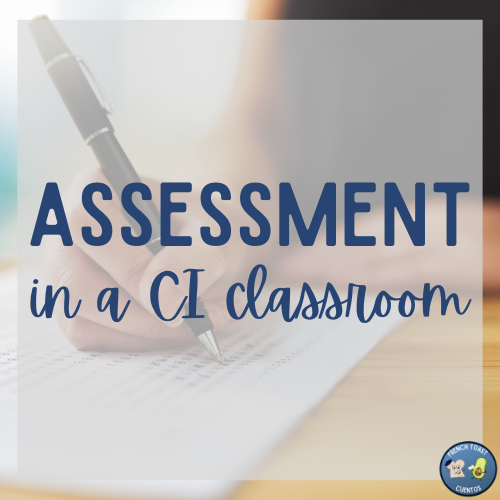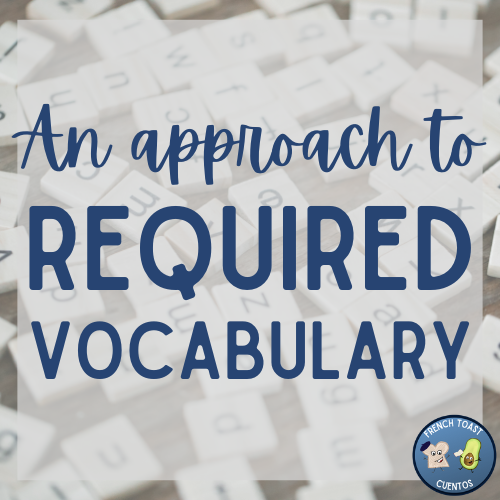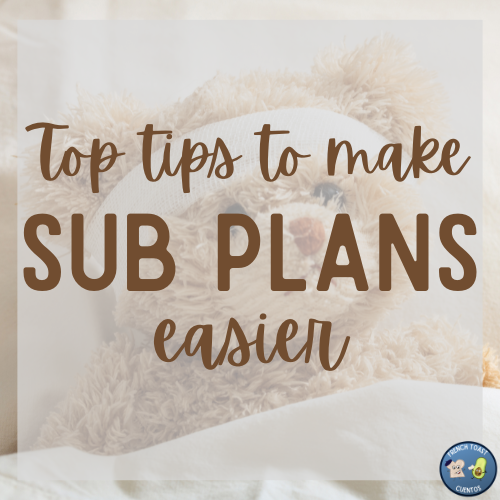An approach to required vocabulary
This year, I’m trying something new with how my students learn vocabulary. My Level 2 students came from a more traditional language classroom background, but I wanted to shift the focus to providing as much comprehensible input as possible while still ensuring they’d be prepared for Level 3. To achieve this, I’ve been blending storytelling, PACE grammar lessons, and typical vocabulary lists—but with a twist: a flipped classroom approach, specifically for vocabulary.
How It Works
At the start of the week, I give my students a vocabulary list and assign a Gimkit homework activity. They have about a week to complete the Gimkit assignment to practice the vocabulary. Afterward, they take a vocabulary quiz.
I average all of their vocabulary quiz scores together and give them a single Vocabulary grade for the quarter. This grade is separate from their regular summative assessments, allowing me to assess both their overall language progress and their mastery of vocabulary.
Making Vocabulary Relevant
I try to tie each vocabulary list to the lessons we’ll be doing that week, which helps make the words more comprehensible when used in stories or classroom activities. For instance, before a lesson on houses in the past and present, I assigned house-related vocabulary. Before discussing trends throughout the decades, I assigned clothing vocabulary.
Vocabulary Topics for Level 2
Here are some of the vocabulary lists I’ve assigned to my Level 2 students so far:
ER verb infinitives
ER verb conjugation
Numbers (1000 and up)
Time
Clothing
House vocabulary
Body parts & phrases with avoir
Faire conjugation & phrases with faire
Être & subject pronouns
Describing past and present (Summative review)
Expanding This to 8th Grade
After seeing how well this approach worked for my high schoolers, I decided to try it out with my 8th graders starting in December. This has been especially helpful since my school is transitioning from a one-year to a two-year program for middle school French. These students now only have French every other day instead of every day, so I’ve had to make cuts to the curriculum.
By assigning weekly vocabulary homework, I’ve been able to fill in some of the gaps and ensure my 8th graders are learning the foundational vocabulary they’ll need for Level 2. It’s also a great way to help them stay engaged and practice outside of class, even with the reduced instructional time. They may not master all the vocabulary but I am hoping they will be familiar with the words, and to be able to recognize and use some of the words in their writing.
Vocabulary Topics for Level 1
Here are some of the vocabulary lists I’m using in 8th grade:
Numbers 0-30
Numbers 0-70
Numbers 60-100
Family
Food
Adjectives
Clothing
Time
Final Thoughts
Flipping vocabulary practice has been a game-changer for me this year. It not only frees up class time for more engaging activities like storytelling and reading but also helps students come to class better prepared. If you’re looking to balance comprehensible input with vocabulary instruction, this method might be worth trying!
shop here: CI Cuentos Store Madame French Toast
Join our Facebook group here: French Toast Cuentos World Language Collaboration






